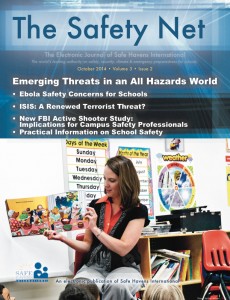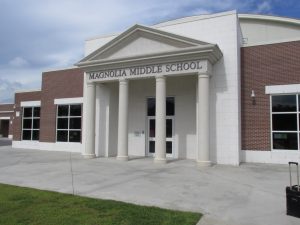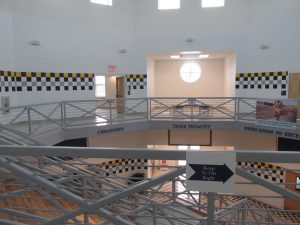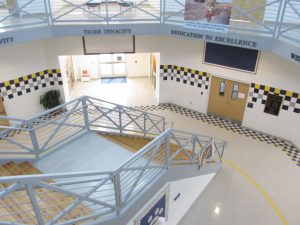Subscribe to School Safety Monthly & The Safety Net!
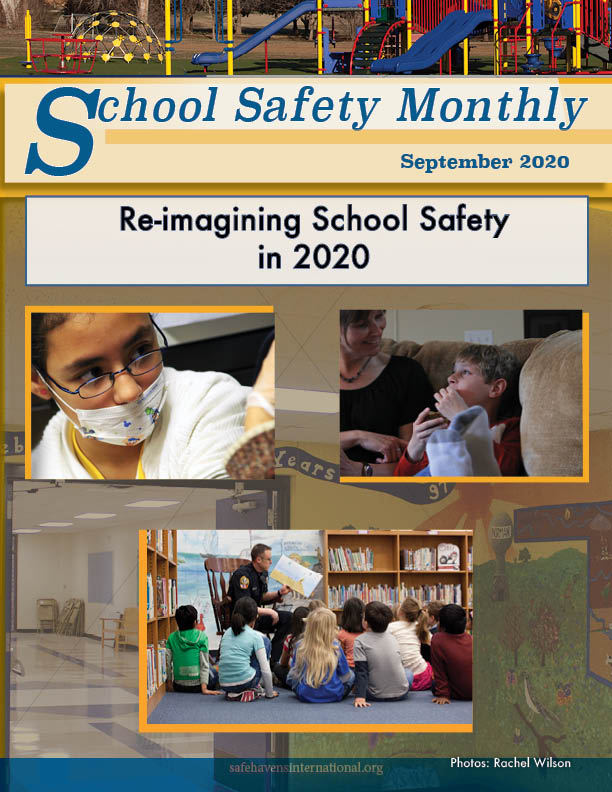
School Safety Monthly
Current Issue:
Click for Archived issues of School Safety Monthly
2020 Issues of School Safety Monthly
2017 Issues of School Safety Monthly
-
- School Safety Monthly, November, 2017: Reducing Sexual Violence in Schools Through Space Management
- School Safety Monthly, October, 2017: Background Checks: What Are You Really Getting?
- School Safety Monthly, September, 2017: Is Your Campus Prepared for Vehicle-Based Attacks?
- School Safety Monthly, May, 2017: Standard of Care for Severe Weather
- School Safety Monthly, April, 2017: School Safety Fidelity
2016 Issues of School Safety Monthly
-
- School Safety Monthly, December, 2016: Active Shooter, Active Assailant and the New Paradigm in School Safety
- School Safety Monthly, November, 2016: School Safety, Post-Election
- School Safety Monthly, October, 2016: Improving School Lockdowns
- School Safety Monthly, September 2016 – Preparedness Month: Who Cares About Fire Drills?
- School Safety Monthly, August 2016 – Active Shooters, Terrorist Attacks and School Lockdowns
- School Safety Monthly, April/May 2016 – Social Media
- School Safety Monthly, March 2016 – Summer School Emergency Preparedness
- School Safety Monthly, February 2016 – Selling Safety: Getting Support for Campus Safety Initiatives
- School Safety Monthly, January 2016 – School Threats
2015 Issues of School Safety Monthly
- School Safety Monthly, December 2015 – Shelter in Place!
- School Safety Monthly, November 2015 – School Terrorism: Revisited
- School Safety Monthly, October 2015 – Community Preparedness, Recent Tragedies and All-Hazards Planning
- School Safety Monthly, September 2015 – Emergency Mapping and More
- School Safety Monthly, August 2015 – Free School Safety Resources
- School Safety Monthly, July 2015 – Student Supervision
- School Safety Monthly, June 2015 – School Security Technology
- School Safety Monthly, May 2015 – Mental Health
- School Safety Monthly, April 2015 – Lockdown
- School Safety Monthly, March 2015 – Natural Disasters
- School Safety Monthly, February 2015 – School Terrorism: A Balanced Approach
- School Safety Monthly, January 2015 – Active Shooter Training: Revisited
The Safety Net (The Safe Havens Electronic Journal of School Safety)
Download the Safety Net here:
Click to see the listing of past issues of The Safety Net:
- The Safety Net – October 2014 • Volume 3 • Issue 2 • Ebola, ISIS and Active Shooters: Emerging Threats in an All Hazards World
- The Safety Net – January 2013 • Volume 3 • Issue 1 • Sandy Hook Elementary
- The Safety Net – April 2012 • Volume 2 • Issue 3 • Severe Weather & Schools
- The Safety Net – Spring 2012 • Volume 2 • Issue 2
- The Safety Net – Fall 2011 • Volume 2 • Issue 1
- The Safety Net – Fall 2006 • Volume 1 • Issue 3
- The Safety Net – Fall 2006 • Volume 1 • Issue 2
- The Safety Net – Fall 2006 • Volume 1 • Issue 1
